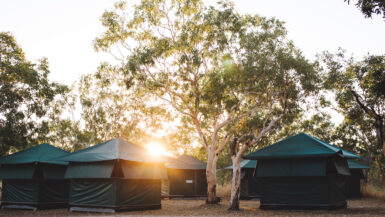Nepal, with its diverse landscapes ranging from the Himalayas to the Terai, offers some of the most breathtaking camping sites in the world. However, with the increasing number of tourists, it is important to ensure that these campsites are eco-friendly and sustainable. In recent years, there has been a growing emphasis on eco-tourism in Nepal, and many campsites have adopted eco-friendly practices to minimize their impact on the environment. In this article, we will explore some of the best eco-friendly camping sites in Nepal, where you can enjoy the beauty of nature while also contributing to its conservation.
Introduction to Eco-Friendly Camping in Nepal
Nepal, the land of the Himalayas, is a paradise for adventure seekers and nature lovers. The country is blessed with a diverse landscape, ranging from snow-capped mountains to lush green forests, making it an ideal destination for camping. Camping in Nepal not only offers a chance to escape the chaos of the city but also provides an opportunity to connect with nature and experience the local culture.
However, with the increasing number of tourists visiting Nepal every year, the impact on the environment has become a major concern. Eco-friendly camping is an ideal solution to this problem. Eco-friendly camping practices aim to minimize the negative impact on the environment while providing a comfortable and enjoyable camping experience.
In recent years, there has been a significant increase in the number of eco-friendly camping sites in Nepal. These sites are designed to be sustainable and responsible, and they provide an opportunity for visitors to experience the natural beauty of Nepal without harming the environment.
In this article, we will explore the best eco-friendly camping sites in Nepal, their features, benefits, and challenges faced by them. We will also provide tips on how to camp eco-friendly and discuss the future of eco-friendly camping in Nepal. So, let’s begin our journey towards sustainable camping in Nepal.
Top Eco-Friendly Camping Sites in Nepal
Nepal has a plethora of camping sites that cater to different preferences and budgets. However, not all camping sites in Nepal are eco-friendly. To help you plan your sustainable camping trip, we have compiled a list of the top eco-friendly camping sites in Nepal.
1. Gosaikunda Lake
Gosaikunda is a high-altitude lake located in the Langtang National Park. The lake is considered sacred by both Hindus and Buddhists and attracts a large number of pilgrims every year. The camping site at Gosaikunda is eco-friendly, and the facilities are basic but comfortable. The camping site offers stunning views of the surrounding mountains and the lake.
2. Annapurna Base Camp
Annapurna Base Camp is one of the most popular trekking destinations in Nepal. The camping site at Annapurna Base Camp is eco-friendly, and the facilities are basic but sufficient. The camping site offers breathtaking views of the Annapurna mountain range and the surrounding valleys.
3. Ghalegaun
Ghalegaun is a beautiful village located in the Lamjung district of Nepal. The village is known for its rich culture and traditions. The camping site at Ghalegaun is eco-friendly, and the facilities are basic but comfortable. The camping site offers a unique experience of living with the locals and experiencing their culture firsthand.
4. Khopra Ridge
Khopra Ridge is a lesser-known trekking destination located in the Annapurna region. The camping site at Khopra Ridge is eco-friendly, and the facilities are basic but comfortable. The camping site offers stunning views of the Annapurna mountain range and the surrounding valleys.
5. Bardia National Park
Bardia National Park is a wildlife reserve located in the Terai region of Nepal. The camping site at Bardia National Park is eco-friendly, and the facilities are basic but comfortable. The camping site offers an opportunity to experience the wildlife of Nepal up close and personal.
These are just a few of the many eco-friendly camping sites in Nepal. Each camping site offers a unique experience and an opportunity to connect with nature while being responsible towards the environment.
Features of Eco-Friendly Camping Sites in Nepal
Eco-friendly camping sites in Nepal are designed to minimize the negative impact on the environment while providing a comfortable and enjoyable camping experience. Here are some of the features of eco-friendly camping sites in Nepal:
1. Sustainable Infrastructure
Eco-friendly camping sites in Nepal are built using sustainable materials and methods. The infrastructure is designed to minimize the use of natural resources and to reduce waste. The camping sites are equipped with composting toilets, solar-powered lighting, and water-efficient systems.
2. Responsible Waste Management
Eco-friendly camping sites in Nepal have a strict waste management policy. Visitors are encouraged to bring their own reusable water bottles and to dispose of their waste responsibly. The camping sites have recycling facilities, and the staff ensures that waste is disposed of properly.
3. Local Community Involvement
Eco-friendly camping sites in Nepal work closely with the local communities. The camping sites employ local staff and offer training and development opportunities. The camping sites also promote local products and services, which helps to support the local economy.
4. Nature Conservation
Eco-friendly camping sites in Nepal prioritize nature conservation. The camping sites are located in areas that are rich in biodiversity, and the staff ensures that visitors do not harm the environment. The camping sites also offer educational programs to raise awareness about the importance of conservation.
5. Unique Experiences
Eco-friendly camping sites in Nepal offer unique experiences that are not available in traditional camping sites. Visitors can experience the local culture, cuisine, and way of life. They can also participate in outdoor activities, such as hiking, bird watching, and wildlife spotting.
These are some of the features of eco-friendly camping sites in Nepal. By choosing to camp at an eco-friendly camping site, visitors can have an enjoyable camping experience while being responsible towards the environment.
Benefits of Eco-Friendly Camping in Nepal
Eco-friendly camping in Nepal offers numerous benefits, both for the environment and the visitors. Here are some of the benefits of eco-friendly camping in Nepal:
1. Reduced Environmental Impact
Eco-friendly camping sites in Nepal are designed to minimize the negative impact on the environment. By choosing to camp at an eco-friendly camping site, visitors can reduce their carbon footprint and help to preserve the natural beauty of Nepal.
2. Authentic Cultural Experience
Eco-friendly camping sites in Nepal offer visitors an opportunity to experience the local culture and way of life. Visitors can interact with locals, learn about their traditions and customs, and taste the local cuisine.
3. Unique Outdoor Experience
Eco-friendly camping sites in Nepal are located in areas that offer unique outdoor experiences. Visitors can go hiking, trekking, wildlife spotting, and bird watching. They can also enjoy the stunning views of the mountains, valleys, and lakes.
4. Affordable Camping Option
Eco-friendly camping in Nepal is an affordable option for visitors who want to experience the beauty of Nepal without breaking the bank. Eco-friendly camping sites offer basic but comfortable facilities at a reasonable price.
5. Educational Opportunities
Eco-friendly camping sites in Nepal offer educational opportunities for visitors. Visitors can learn about nature conservation, sustainable living, and the local culture. They can also participate in workshops and training programs.
These are just a few of the benefits of eco-friendly camping in Nepal. By choosing to camp at an eco-friendly camping site, visitors can have a unique and authentic experience while being responsible towards the environment.
Tips for Eco-Friendly Camping in Nepal
Camping in Nepal can be a wonderful experience, but it’s important to be responsible towards the environment. Here are some tips for eco-friendly camping in Nepal:
1. Choose Eco-Friendly Camping Sites
When planning your camping trip in Nepal, choose eco-friendly camping sites that prioritize sustainability and responsible tourism. These camping sites are designed to minimize the negative impact on the environment while providing a comfortable and enjoyable camping experience.
2. Reduce Waste
Bring reusable water bottles and food containers to reduce waste. Avoid using single-use plastic products, such as straws and cutlery. Dispose of your waste responsibly, and use the recycling facilities provided at the camping site.
3. Respect the Environment
Respect the environment by not littering, damaging plants or wildlife, or disturbing the natural habitat. Stick to designated trails and campsites, and avoid creating new trails. Use biodegradable soap and shampoo, and avoid using chemicals that can harm the environment.
4. Conserve Water and Energy
Conserve water and energy by using water-efficient systems and turning off lights and electronics when not in use. Take short showers and avoid wasting water. Use solar-powered lighting and charging stations when available.
5. Support Local Communities
Support the local communities by buying local products and services, and by respecting their culture and traditions. Hire local guides and porters, and stay at eco-friendly camping sites that employ local staff.
By following these tips, you can have an enjoyable camping experience in Nepal while being responsible towards the environment.
Challenges Faced by Eco-Friendly Camping Sites in Nepal
Eco-friendly camping sites in Nepal face several challenges, both internal and external. Here are some of the challenges faced by eco-friendly camping sites in Nepal:
1. Lack of Awareness
One of the biggest challenges faced by eco-friendly camping sites in Nepal is the lack of awareness among visitors. Many visitors are not aware of the importance of responsible tourism and the negative impact of their actions on the environment.
2. Limited Resources
Eco-friendly camping sites in Nepal often have limited resources, which makes it difficult to implement sustainable practices. Limited access to water and electricity, as well as a lack of funding, can make it challenging to maintain and improve the infrastructure.
3. Climate Change
Climate change is a major challenge faced by eco-friendly camping sites in Nepal. The changing weather patterns can affect the availability of natural resources, such as water and food. It can also impact the biodiversity of the area and increase the risk of natural disasters.
4. Balancing Conservation and Tourism
Eco-friendly camping sites in Nepal need to balance conservation and tourism. They need to promote responsible tourism while protecting the environment and preserving the local culture and traditions.
5. Lack of Government Support
Eco-friendly camping sites in Nepal often lack government support and funding. The government needs to provide support and incentives for eco-friendly tourism in order to encourage sustainable practices and promote responsible tourism.
Despite these challenges, eco-friendly camping sites in Nepal continue to strive towards sustainability and responsible tourism. By raising awareness and working together, we can overcome these challenges and ensure a sustainable future for Nepal’s tourism industry.
Future of Eco-Friendly Camping in Nepal
As more people become aware of the negative impact of traditional camping practices on the environment, the demand for eco-friendly camping sites is likely to increase in Nepal. This trend is not only limited to Nepal, but it is a global phenomenon, and the country has the potential to become a leader in eco-tourism.
More and more camping sites are likely to adopt eco-friendly practices, such as using renewable energy sources, composting toilets, and recycling facilities. Additionally, camping sites may start to offer educational programs to teach visitors about sustainable living practices and the importance of preserving the environment.
The government of Nepal can also play a crucial role in promoting eco-friendly camping by providing incentives to camping sites that adopt sustainable practices. They can also introduce policies that regulate camping practices to ensure that they are not harmful to the environment.
One of the challenges faced by eco-friendly camping sites is the lack of awareness among visitors. Many people may not be aware of the negative impact of traditional camping practices on the environment, and they may not be willing to pay more to stay at an eco-friendly camping site. Therefore, camping sites may need to invest in marketing and education to attract more visitors.
In conclusion, the future of eco-friendly camping in Nepal is promising. As more people become aware of the importance of sustainable living, the demand for eco-friendly camping sites is likely to increase. The government and camping site owners can play a crucial role in promoting eco-friendly camping practices. By adopting sustainable practices and educating visitors, Nepal can become a leader in eco-tourism and promote a more sustainable future for the planet.
Conclusion and Recommendations for Eco-Friendly Camping in Nepal
Eco-friendly camping in Nepal is a great way to experience the natural beauty of the country while minimizing your impact on the environment. In this article, we have discussed the top eco-friendly camping sites in Nepal, the features of eco-friendly camping sites, the benefits of eco-friendly camping, tips for eco-friendly camping, challenges faced by eco-friendly camping sites, and the future of eco-friendly camping in Nepal.
It is important to remember that eco-friendly camping is not just about staying in a sustainable campsite. It is also about adopting sustainable practices while camping, such as using biodegradable products, reducing waste, and respecting the natural environment.
We recommend that visitors to Nepal consider staying at eco-friendly camping sites to minimize their impact on the environment. When selecting a camping site, look for those that have adopted sustainable practices, such as using renewable energy sources, composting toilets, and recycling facilities.
Visitors should also be mindful of their actions while camping and follow the principles of Leave No Trace. This includes packing out all trash, avoiding damaging vegetation, and respecting wildlife.
In conclusion, eco-friendly camping in Nepal provides an opportunity to experience the natural beauty of the country while minimizing your impact on the environment. By staying at eco-friendly camping sites and adopting sustainable practices, visitors can help to promote a more sustainable future for Nepal and the planet.





Leave a reply